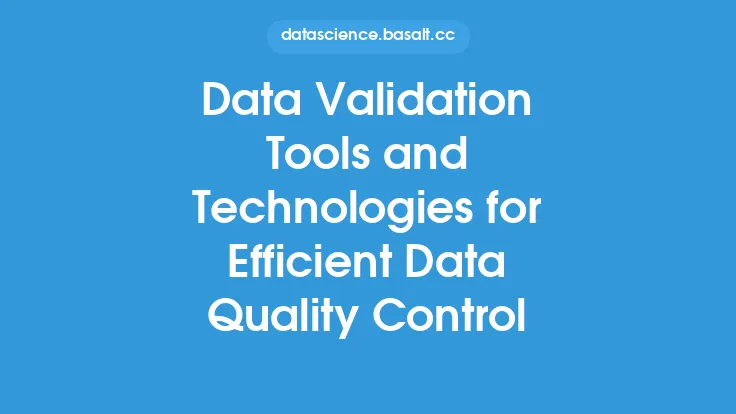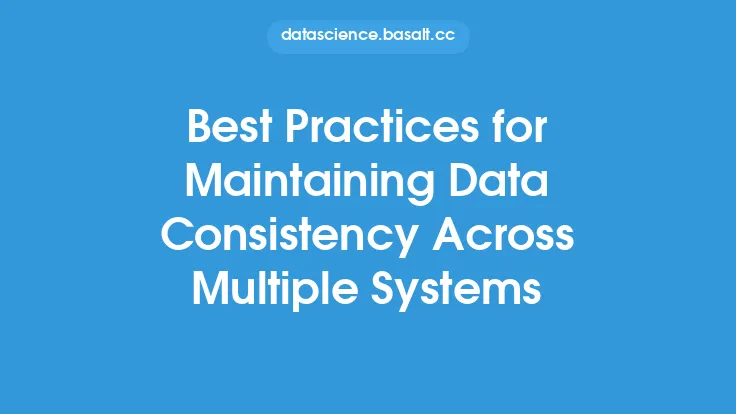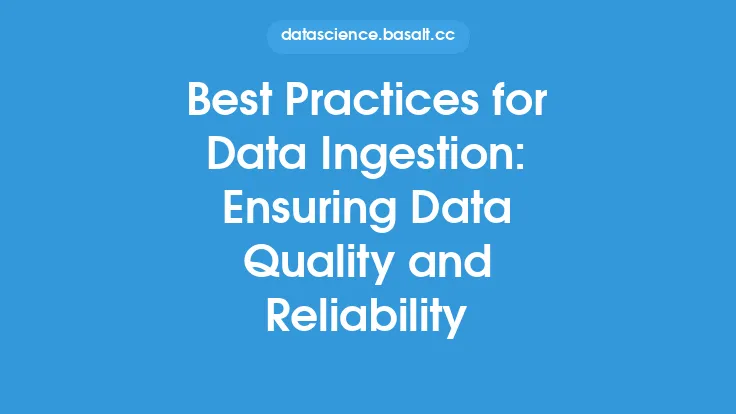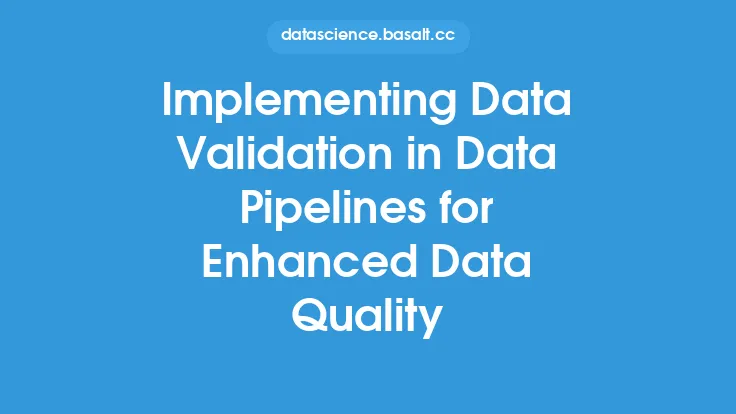Data validation is a crucial step in the data analysis process, ensuring that the data collected is accurate, consistent, and reliable. It involves checking the data for errors, inconsistencies, and inaccuracies, and taking corrective measures to rectify them. The goal of data validation is to ensure that the data is of high quality, which is essential for making informed decisions, drawing accurate conclusions, and avoiding costly mistakes.
Introduction to Data Validation
Data validation is an essential component of data cleaning, which is the process of identifying, correcting, and transforming raw data into a consistent and reliable format. It involves a series of checks and tests to ensure that the data meets the required standards of quality, accuracy, and consistency. Data validation can be performed manually or automatically, using specialized software and algorithms. The process of data validation typically involves several steps, including data inspection, data verification, and data correction.
Types of Data Validation
There are several types of data validation, each with its own specific purpose and application. These include:
- Format validation: This type of validation checks the format of the data, ensuring that it conforms to the required standards. For example, checking that a date field is in the correct format (e.g., mm/dd/yyyy).
- Range validation: This type of validation checks that the data falls within a specified range or set of values. For example, checking that a temperature reading is within a certain range (e.g., -20°C to 50°C).
- Code validation: This type of validation checks that the data conforms to a specific code or set of codes. For example, checking that a product code is valid and recognized by the system.
- Cross-validation: This type of validation checks the data against other data or sources to ensure consistency and accuracy. For example, checking that a customer's address matches the address on file.
Data Validation Techniques
There are several data validation techniques that can be used to ensure the accuracy and consistency of data. These include:
- Data profiling: This involves analyzing the data to identify patterns, trends, and anomalies. Data profiling can help identify errors, inconsistencies, and inaccuracies in the data.
- Data verification: This involves checking the data against other data or sources to ensure consistency and accuracy. Data verification can be performed manually or automatically, using specialized software and algorithms.
- Data normalization: This involves transforming the data into a consistent format, to ensure that it can be easily compared and analyzed. Data normalization can help reduce errors and inconsistencies in the data.
- Data quality metrics: This involves using metrics such as accuracy, completeness, and consistency to measure the quality of the data. Data quality metrics can help identify areas where the data needs to be improved.
Data Validation Tools and Software
There are several data validation tools and software available, each with its own specific features and capabilities. These include:
- Spreadsheet software: Such as Microsoft Excel, which provides a range of data validation tools and functions, including data profiling, data verification, and data normalization.
- Data validation software: Such as Talend, which provides a range of data validation tools and functions, including data profiling, data verification, and data normalization.
- Programming languages: Such as Python, which provides a range of data validation libraries and frameworks, including Pandas and NumPy.
- Data quality software: Such as Trifacta, which provides a range of data quality tools and functions, including data profiling, data verification, and data normalization.
Best Practices for Data Validation
There are several best practices for data validation, which can help ensure the accuracy and consistency of data. These include:
- Validate data at the point of entry: This involves validating the data as it is entered, to prevent errors and inconsistencies from occurring.
- Use automated data validation tools: This involves using specialized software and algorithms to automate the data validation process, reducing the risk of human error.
- Use data quality metrics: This involves using metrics such as accuracy, completeness, and consistency to measure the quality of the data, and identify areas where the data needs to be improved.
- Continuously monitor and update data validation rules: This involves regularly reviewing and updating data validation rules, to ensure that they remain relevant and effective.
Common Data Validation Challenges
There are several common data validation challenges, which can make it difficult to ensure the accuracy and consistency of data. These include:
- Data complexity: This involves dealing with complex data sets, which can be difficult to validate and analyze.
- Data volume: This involves dealing with large volumes of data, which can be difficult to validate and analyze.
- Data variety: This involves dealing with diverse data sets, which can be difficult to validate and analyze.
- Limited resources: This involves dealing with limited resources, such as time, budget, and personnel, which can make it difficult to validate and analyze data.
Conclusion
Data validation is a critical step in the data analysis process, ensuring that the data collected is accurate, consistent, and reliable. By using a range of data validation techniques, tools, and software, and following best practices, organizations can ensure the quality of their data, and make informed decisions. Whether performed manually or automatically, data validation is an essential component of data cleaning, and is critical for ensuring the accuracy and consistency of data.





